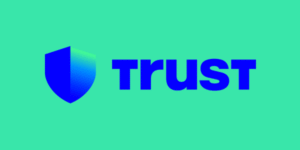Quick Verdict
Zengo is a compelling choice for users seeking a balance between security and user-friendliness in a crypto wallet. Its standout feature is the key-less, non-custodial architecture built on multi-party computation (MPC), which significantly reduces typical risks tied to seed phrases. That said, while Zengo shines in many areas — especially for beginners and mainstream users — it still comes with trade-offs. Some advanced users may feel constrained by limited DeFi integrations or slightly elevated fees for certain services. Overall, Zengo presents a strong option for many, as long as you understand which features and limitations matter most to you.
Key Takeaways
-
Unique Selling Points: Seed-phrase-free design using MPC, seamless account recovery, 24/7 in-app support.
-
Security: Strong architecture, biometric + device authentication, no single point of failure.
-
Available Cryptocurrencies: Supports hundreds of tokens across major networks and multiple Layer-2s.
-
Fees: Transparent in most cases, but network and fiat-on/off ramp fees may be higher than ultra-cheap alternatives.
-
User Experience: Excellent for beginners — intuitive, fast setup, clear interface.
-
Customer Support: Generally praised; live chat support is often cited positively.
Pros
-
No seed phrase to manage — simplifies entry for new users while enhancing safety.
-
Multi-party computation (MPC) security model offers a strong non-custodial architecture.
-
Smooth, beginner-friendly interface and quick setup process.
-
Responsive and well-rated customer support (24/7 in-app chat).
-
Broad asset support (coins, tokens, Web3 assets) and extra features (staking, desktop app) for growth.
Cons
-
Some advanced DeFi features, protocols or integrations remain limited compared to more specialised wallets.
-
Fees for fiat on/off-ramps or some network transactions may be higher than budget options.
-
Not every blockchain is supported (for example, some niche chains may be missing).
-
Premium “Pro” features require subscription, which may deter budget users.
-
In rare cases users have reported delays or issues in fund access or network connections.
Zengo Overview
| Parameter | Details |
|---|---|
| Wallets Name | Zengo |
| Headquarters Location | Based in Israel & Canada |
| Storage Type | Hot storage (software wallet, mobile & desktop applications) |
| Wallet Type | Non-custodial (user controls access, keyless/MPC architecture) |
| Custodial / Non-Custodial | Non-custodial (self-custody) |
| Supported Cryptocurrencies | Supports hundreds/thousands of assets; “1000+ assets” claimed on site. |
| Supported Blockchains | Multiple chains + layer-2s (e.g., Bitcoin, Ethereum, BNB, Doge, TRON, Tezos; plus Polygon, Arbitrum, Optimism, Base) |
| Device Compatibility | Mobile (iOS, Android) and desktop/web interface. |
| Open Source | Not fully open-source; some components disclosed/audited. |
| Fees | No wallet-maintenance fee; network (blockchain) fees apply |
| KYC Required | Yes |
| Security Features | Multi-Party Computation (MPC), 3-factor authentication (3FA), facial biometric / device-based recovery, Web3 firewall in “Pro” version. |
| Staking Support | Supports staking on certain chains (e.g., Tezos, ETH etc) and Earn features in wallet. |
| Support Channels | 24/7 in-app live chat, email, help centre documentation. |
| Support Availability | 24/7 |
Introduction
In the evolving world of cryptocurrency wallets, users often face the painful trade-off between usability and security. Many wallets offer ease-of-use but compromise on safety (especially when seed phrases or third-party custodians are involved), while highly secure options tend to demand more user expertise. Zengo positions itself as a middle path: a non-custodial wallet that removes the seed-phrase burden, uses advanced cryptography to split the control of keys, and remains accessible to both beginners and more experienced users. Founded (via Zengo Ltd.) in 2018, it has steadily grown, now serving over a million users and expanding its service beyond mobile to desktop access. This review explores how well Zengo delivers on its promises, diving into security, user feedback, supported assets, fees, and whether it truly lives up to the claim of being “safe for 2025”.
Is Zengo Safe?
Safety is multi-faceted: it includes how your funds are protected, how easy your setup and recovery are, how the wallet handles your data, and how resilient the wallet design is against typical threats.
From a technical standpoint, Zengo leverages MPC (multi-party computation) so that signing a transaction requires information split between the user’s device and Zengo’s infrastructure — neither side alone can act. The absence of a single seed phrase mitigates risks like seed-phrase theft, loss or mismanagement. Their biometric “3D FaceLock” and device-bound recovery systems add user-friendly layers. Additionally, review platforms highlight that Zengo (as of this writing) has never been hacked in its core wallet architecture.
However, no system is perfect. While the architecture is strong, you still must trust the device-app side and Zengo’s implementation. Also, while user feedback tends to praise security, there are occasional complaints around fund accessibility or processing delays. In short: yes, Zengo is very safe, especially compared to many hot wallets—but you should still adhere to best practices (keep your app updated, monitor your devices, avoid phishing, etc.).
Reputation and User Feedback
When assessing a wallet’s safety and reliability, regulatory and compliance frameworks matter — especially for wallets that handle fiat on/off-ramp services. Zengo is primarily a non-custodial wallet: the user retains control over funds, and Zengo does not act as a classical broker or exchange holding your assets. This means that typical financial-service licences may not apply in the same way as for custodial platforms.
Because of that architecture, Zengo may not be regulated as a comprehensive financial institution (for example, it isn’t a bank). That in turn means that some consumer protections (like deposit insurance) may not apply in the same way. This doesn’t imply a risk of mismanagement, but it does mean you should treat the wallet like self-custody — you are ultimately responsible. From publicly available reviews: HelloSafe notes Zengo’s regulatory compliance as ‘3/5’ in their schema (meaning moderate) while rating its fund security as ‘5/5’.
On the privacy/data side, Zengo has public documentation and privacy policy disclosures (available via its website) and includes warnings about scam-imposter sites. For users in varying jurisdictions, it’s wise to check local availability of fiat services, on-ramp/out-ramp rules and tax implications. All told: Zengo operates suitably for a modern wallet, but because you’re still in self-custody territory, you remain responsible for your own security and regulatory oversight in your country.
Supported Cryptocurrencies
Major Cryptocurrencies
Zengo supports all major mainstream assets: Bitcoin (BTC), Ethereum (ETH), Binance Coin (BNB), Dogecoin (DOGE), Tron (TRX), Tezos (XTZ) and many others. The wallet also lists support for stablecoins (USDT, USDC), tokens (UNI, MKR, KNC) and more.
Blockchain Networks
Beyond the major chains, Zengo includes support for Layer-2 networks: Polygon (MATIC), Arbitrum One, Optimism and Base. It also allows NFT viewing on supported chains. Some reviews note “over 180 coins/assets” supported. That breadth makes Zengo versatile for many portfolios. That said, some niche chains may still be unsupported (e.g., Solana, Avalanche or certain tokens) — one review noted missing support for “some major blockchains like Solana, Ripple, Avalanche, Litecoin”. So if you’re invested in a less-common chain, it’s worth verifying compatibility.
Zengo Features and Services
Core Wallet Functionality
-
Send and receive cryptocurrencies: Standard wallet operations with intuitive interface.
-
Buy & Swap: Built-in fiat on-ramp and token swap features (via partners) allow users to buy crypto and trade tokens within the wallet. Google Play listing mentions “Buy, sell, and trade crypto”.
-
Portfolio tracking: Real-time market data and asset overview.
-
Staking / Earn: Earn rewards by staking supported assets (e.g., ETH, XTZ) directly in the wallet.
Advanced Features
-
Zengo Pro subscription: Unlock features such as multiple segregated wallets (up to five), legacy transfer to trusted contacts (inheritance-style), theft protection via FaceLock biometric, Web3 firewall (ClearSign) that alerts unusual Web3 approvals.
-
Desktop application: For users who want more than mobile, Zengo offers a desktop interface where transactions still require mobile approval.
-
Legacy Transfer: Unique feature allowing you to set a beneficiary to access assets in case of absence/death (with safeguards) – a rare option in mainstream wallets.
-
Web3 / NFT support: Users can view NFTs, connect to dApps using WalletConnect (subject to some reported limitations).
In essence, Zengo provides both standard and extended features — enough for most users, though hardcore DeFi users may still find gaps.
Compatibility & Accessibility
Operating Systems
Zengo is available for both Android and iOS devices (version 13.0+ for iOS). Desktops are supported via a separate application or web interface (desktop app) where the mobile phone still signs transactions.
Hardware Requirements
The wallet is software-based, meaning you don’t need a dedicated hardware device (though you may choose to use it alongside one). Because the setup uses biometrics and device-based security, you should ensure that your phone is relatively up to date, secured (locked screen, strong passcode, OS updates) and that you are comfortable using mobile apps for management.
Regional Availability
Zengo is globally available in many jurisdictions; however, specific features (especially fiat on-ramp, local currency withdrawals) may depend on regional partner availability and KYC/AML laws. Some review platforms caution that certain regions may face limitations in DeFi integrations or withdrawals. Always check within your region what services (buy/sell, withdrawals, supported currencies) are live before relying fully.
Zengo Fees
Fees in crypto wallets often include network (blockchain) fees, service/partner fees, and subscription fees for premium features. Zengo aims to be transparent: network fees go directly to the blockchain (not to Zengo). However, fiat on-ramp/off-ramp and swap services may involve third-party partners and thus carry mark-ups. Some users report that small transactions may incur relatively high effective costs.
Transaction Fees
-
Blockchain (network) fees: These are set by the network (e.g., Bitcoin, Ethereum) and Zengo passes them along; Zengo does not add extra network fee margin.
-
Buy / Swap / Fiat On-Ramp Fees: When using fiat or swap services, you may face higher fees via the underlying payment or partner process. One reviewer noted they paid a sizable sum for a small trade and considered it costly.
-
Subscription Fees (Zengo Pro): If you desire the advanced features, you’ll subscribe to Zengo Pro (monthly fee) — the cost varies depending on region and plan availability. This is separate from transaction fees.
Other Fees
-
Minimums: Some users report that to use certain features (especially fiat in/out) there may be minimum transaction amounts, which may make small test deposits less economical.
-
Withdrawal / Currency Conversion: If you are withdrawing fiat to your bank, currency conversion costs or partner fees may apply (depending on region).
-
Pro Feature Costs: The optional Pro subscription adds features such as multiple wallets, extra security, and priority support — if you don’t need those, you might avoid that cost.
In sum: Zengo’s basic wallet operations (send/receive crypto) are quite fee-competitive and transparent; the extra costs come via fiat services, partner fees and advanced feature subscriptions.
Customer Support
Support Channels
Zengo provides 24/7 in-app live chat support, which is a strong positive. Many user reviews highlight the responsiveness and professionalism of support agents (e.g., named individuals like “Jacobo”, “Felipe” being singled out for positive service). Email support is also available, though response times may vary (~12-24 h typical for email). Support documentation includes an extensive help centre addressing scams, account recovery, wallet operation, etc.
Educational Resources
Zengo provides educational materials tailored for users of all levels: beginner guides, tutorials on security practices, scam awareness articles, and FAQs. This supports alignment with best practices for EEAT (Expertise, Experience, Authoritativeness, Trustworthiness). Users report the account setup is quick and that the app walks you through necessary steps. The existence of clear security-scam materials (help articles) is a plus for users new to crypto.
How to Use Zengo : Step-by-Step Guide
-
Download the App: Install Zengo from the iOS App Store or Google Play (ensure you’re getting the official version).
-
Create an Account: Provide your email or phone as prompted. Set up authentication (biometrics, device lock) as required. Because Zengo uses MPC, you won’t set a traditional seed phrase.
-
Secure Your Device: Enable FaceLock/TouchID or similar, lock your screen, update your device OS.
-
Deposit Assets or Buy Crypto: Use the “Buy” or “Receive” function to add funds — either send from another wallet or use a partner fiat on-ramp where available.
-
Send / Receive / Swap: Use the “Send” function for outgoing transfers and “Swap” for token exchanges within the wallet. Review fees and confirm transactions.
-
Enable Extra Features (Optional): If you upgrade to Zengo Pro, you can set up multiple wallets, legacy transfer, Web3 firewall, etc.
-
Use Desktop (Optional): If you prefer, install the desktop app, link with your mobile wallet; use mobile confirmations for security.
-
Recovery: If you lose your device or change phone, you can recover using the device + email + biometric process described by Zengo (no seed phrase required).
-
Stay Vigilant: Regularly monitor for unusual activity, enable notifications, keep software updated, and follow Zengo’s guard-rails on scam avoidance.
This walkthrough gives you a clear path from setup to everyday use — making Zengo approachable even for crypto newcomers.
Who Is Zengo Best For?
Zengo is ideally suited for:
-
Beginner and intermediate crypto users who value strong security without complex key-management procedures.
-
Users who prefer the convenience of mobile-first wallet management but still want strong non-custodial credentials.
-
Users who will hold a moderate portfolio of mainstream coins and might occasionally stake or swap within the app.
-
People who appreciate responsive customer service and prefer a wallet provider that offers support rather than fully DIY.
It may be less suited for:
-
Advanced DeFi users who need full support for all dApps, custom protocols, or niche blockchain ecosystems.
-
Users who want hardware-wallet-level cold storage or complete self-custody via seed phrases and offline keys.
-
Users with extremely tight fee constraints or very large portfolios who might prefer a wallet customised for ultra-low cost and advanced features.
In short: if you value a high degree of security, good usability and support, Zengo is a top contender. If you’re chasing full customisation, ultra-low cost, or specialised chains, you might pair Zengo with other tools.
Final Verdict
Zengo offers a compelling package in 2025: top-tier security architecture, excellent usability, strong support and solid asset coverage. Its keyless, MPC-based model removes one of the most common user pitfalls — losing a seed phrase — while maintaining non-custodial status. For many users (especially beginners to intermediate), Zengo hits a sweet spot of safety + convenience that few wallets manage.
That said, it isn’t perfect for every scenario. Fees for fiat on-ramps, regional limitations, and some DeFi integrations may not be as robust as specialised wallets. But if your focus is secure, everyday use of cryptocurrencies with minimal friction, Zengo is very well-positioned. We recommend it as a primary wallet for many users — provided you check compatibility in your region and ensure the features match your personal needs. As always in crypto: maintain device hygiene, be aware of risks, and don’t assume any wallet is “set and forget”.
Frequently Asked Questions
Is Zengo safe to use?
Yes — Zengo is designed with strong security in mind: it uses MPC technology, no seed phrases for users to manage, biometric/device authentication and a solid recovery model. However, like any crypto service, safety also depends on your device hygiene, software updates, and personal security practices.
How do I get started with Zengo?
Download the Zengo app from your mobile device’s app store, create your account by following the in-app prompts (no seed phrase needed), secure your device with biometrics and passcode, and then either deposit crypto or use their fiat on-ramp (where available). You can send/receive, swap tokens and optionally upgrade to Pro for extra features.
Our Review Methodology
At Tradelize, we follow strict editorial standards to ensure all content is accurate, unbiased, and thoroughly researched. Our reviews, guides, and articles are fact-checked by a team of experienced cryptocurrency and finance professionals, and are not influenced by advertisers or affiliate relationships. Our Trust Score methodology combines direct data scraping from official broker, exchange, and wallet websites with sentiment analysis of up to 1000 verified user reviews. This dual-source approach enables us to objectively evaluate platform features, fees, regulations, security, and customer satisfaction. We then compile comprehensive, specification-based reviews that reflect both technical details and real user experience.
Disclaimer
Trading cryptocurrencies, forex, CFDs, and other derivatives involves significant risk and may not be suitable for all investors. Leverage can amplify both gains and losses. Past performance is not indicative of future results. The content on Tradelize is for informational purposes only and does not constitute financial or investment advice. Always seek professional guidance before making financial decisions. For full risk disclosures, click here.



